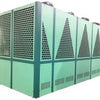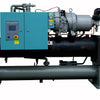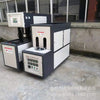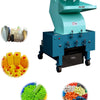Design, Applications, and Market Trends of the 2.5L Extrusion Blow Molding Machine
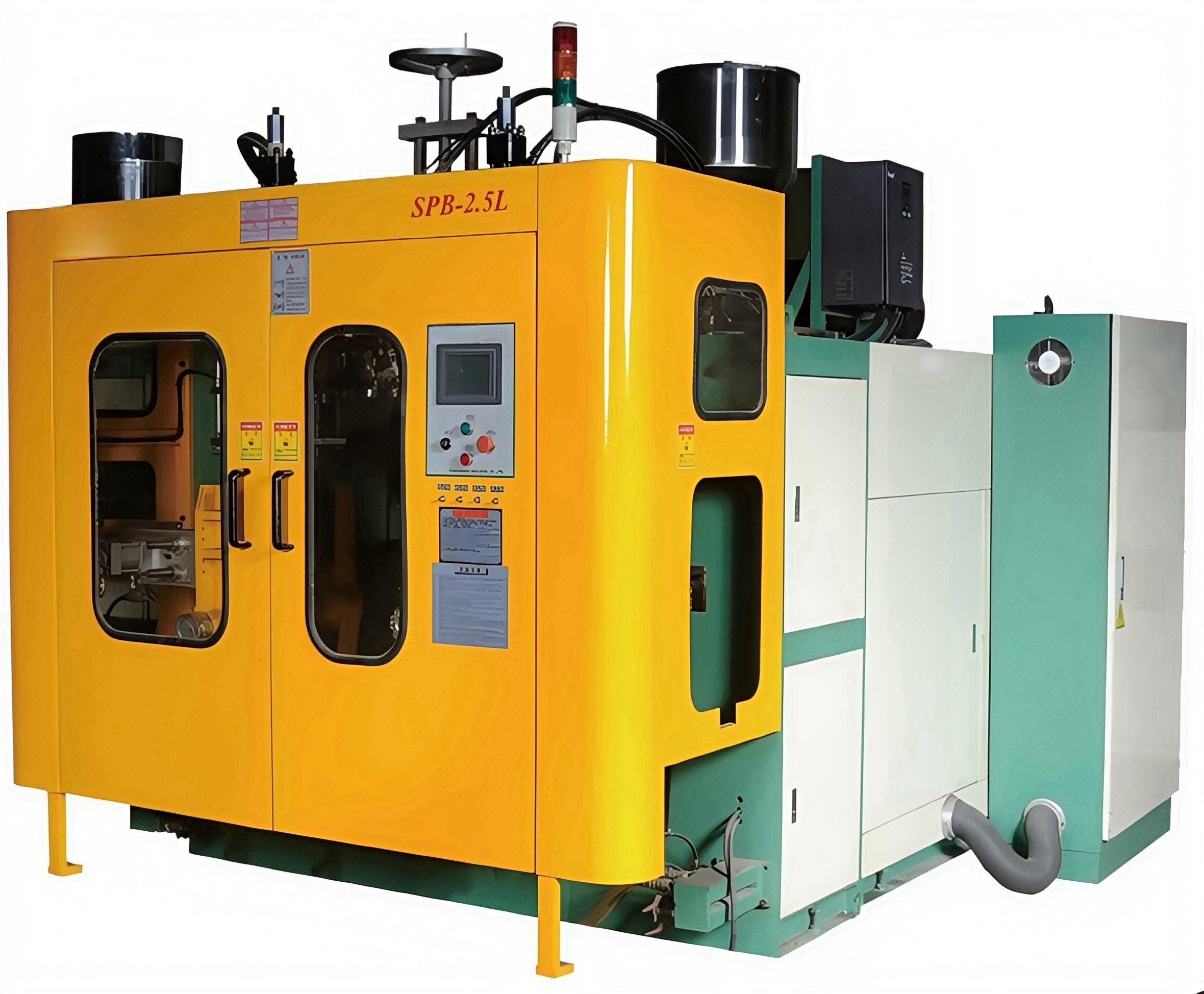
1. Introduction
Extrusion blow molding machines are essential for manufacturing hollow plastic products such as bottles, containers, and industrial tanks. The 2.5L extrusion blow molding machine (e.g., DKB-2.5L2JUWD) represents a mid-range solution for producing containers with volumes ranging from 0.3L to 2.5L, catering to industries like cosmetics, pharmaceuticals, and food packaging. With advancements in automation, multi-layer co-extrusion, and energy efficiency, these machines have become pivotal in meeting global demand for lightweight, durable, and customizable plastic products. This paper examines their technical design, operational efficiency, and alignment with industry trends such as Industry 4.0 and sustainability.
2. Technical Principles of the 2.5L Extrusion Blow Molding Machine
2.1 Core Process: Extrusion Blow Molding
The machine operates through the following stages:
-
Extrusion:
- A thermoplastic parison (tube) is extruded from materials like PP, PE, HDPE, or PETG.
-
Clamping:
- The parison is clamped into a mold cavity.
-
Blowing:
- Compressed air inflates the parison to match the mold's shape.
-
Cooling and Ejection:
- The molded product is cooled and ejected.
2.2 Key Components and Specifications
-
Extruder System:
- Screw Diameter: Φ90mm (for primary extrusion).
- Drive Power: 55 kW (ensuring high plasticization efficiency).
- Output Capacity: Up to 120 kg/h (enabling high-volume production).
-
Co-Extrusion Capabilities:
- Supports 1–6 layer co-extrusion for barrier properties (e.g., oxygen resistance in food packaging).
-
Mold and Clamping Unit:
- Clamping Force: 70 kN (ensuring precise mold closure).
- Cycle Time: 3.7 seconds (for high-speed production).
-
Control System:
- PLC-based automation with touch-screen interface for parameter adjustments.
2.3 Advantages of the DKB-2.5L2JUWD Model
- Gradient Bottle Production: Eliminates the need for post-processing spray painting through color gradient extrusion.
- Multi-Layer Flexibility: Enables production of containers with enhanced barrier properties (e.g., chemical resistance).
- High Efficiency: Produces over 700 bottles/hour (ideal for mass production).
- Customization Options: Modular design allows integration of optional systems like leak detection and automated weighing.
3. Industrial Applications
3.1 Packaging Industry
-
Cosmetics and Personal Care:
- Gradient bottles with aesthetic color transitions (e.g., shampoo and skincare containers).
-
Food and Beverage:
- 1–2.5L PETG bottles for juices, sauces, and edible oils (leveraging food-grade safety and transparency).
3.2 Pharmaceutical Sector
-
Medicine Containers:
- HDPE bottles with multi-layer barriers to protect against moisture and light degradation.
3.3 Industrial and Chemical Storage
-
Chemical Containers:
- 2.5L HDPE drums for solvents and cleaning agents (resistant to corrosion and leakage).
4. Market Trends and Competitive Landscape
4.1 Global Demand Drivers
-
Lightweighting and Material Efficiency:
- Demand for thinner yet durable containers reduces resin consumption (e.g., 2.5L bottles using 30% less material).
-
Smart Manufacturing:
- Integration of IoT sensors for real-time monitoring of parison thickness and mold temperature.
-
Sustainability:
- Adoption of bio-based polymers (e.g., PLA) and recyclable HDPE/PETG to meet environmental regulations.
4.2 Regional Market Dynamics
-
Asia-Pacific:
- China leads in 2.5L blow molding machine exports, driven by demand from Southeast Asia and Africa.
-
Europe and North America:
- Focus on energy-efficient machines compliant with EU Ecodesign and U.S. EPA standards.
4.3 Key Players
-
Dongguan JinJun Machinery Co., Ltd.:
- Innovator in gradient bottle technology with the DKB-2.5L2JUWD model.
-
Husky Injection Molding Systems:
- Competes with advanced co-extrusion solutions for high-barrier containers.
5. Future Innovations
5.1 Intelligent and Connected Systems
-
AI-Driven Process Optimization:
- Predictive algorithms adjust extrusion speed and blowing pressure to minimize defects.
-
Digital Twin Technology:
- Virtual simulations optimize mold design and production parameters before physical trials.
5.2 Sustainable Materials and Processes
-
Biodegradable Polymers:
- Integration of PBAT and PLA for compostable 2.5L containers.
-
Energy Recovery Systems:
- Heat exchangers to recycle waste heat from the extruder, reducing energy consumption by 20%.
5.3 Modular and Custom Solutions
-
Quick-Change Molds:
- Interchangeable mold inserts enable rapid switching between bottle designs.
-
Hybrid Machines:
- Combining extrusion and injection molding for complex multi-material products.
6. Conclusion
The 2.5L extrusion blow molding machine, exemplified by the DKB-2.5L2JUWD, plays a vital role in modern manufacturing by enabling efficient, customizable, and sustainable production of hollow plastic products. As industries prioritize lightweighting, smart automation, and eco-friendly materials, advancements in co-extrusion technology, AI-driven controls, and modular design will drive future competitiveness. With the global blow molding market projected to reach $437.77 billion by 2029, companies investing in intelligent and sustainable solutions will lead the next phase of growth.

